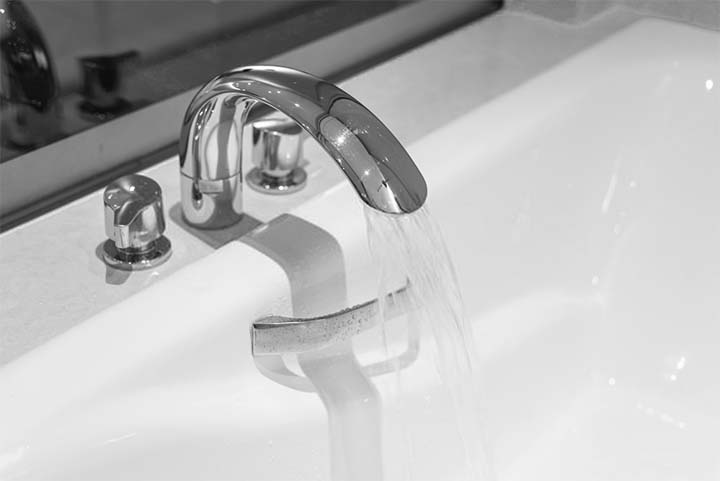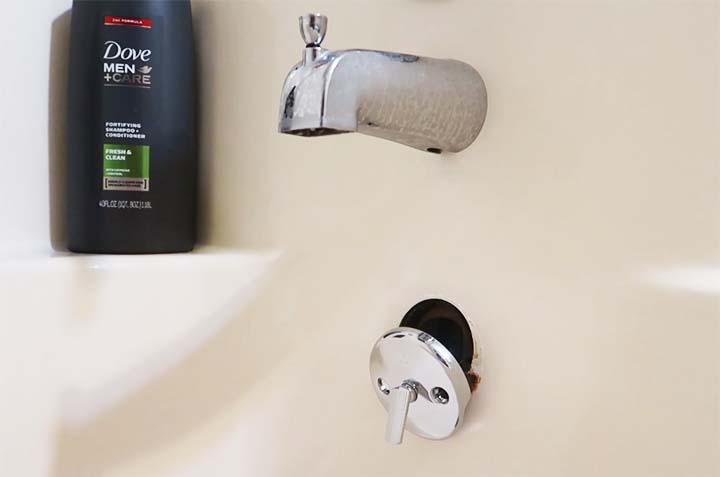A bathtub, undoubtedly, is our favorite place for relaxation and thinking about our future with closed eyes and calmness. But the comfort and calmness in your bathtub may soon turn into a nightmare when you see the faucet is leaking.
At that moment, you may try to tighten the handle or replace the stems. But what if the bathtub faucet still leaks after replacing the stems?
Well, this is horrific, like the Final Destination movie. You are scared but don’t know what to do to stop the water flow. You will stand numb on the floor and see slowly water flooding the entire bathroom floor only to inflict pain to your existing problem of a leaky faucet.
Well, what could you do at this difficult moment? Is there any way to stop the faucet leaks when the replaced stem of the handle has failed?
Luckily, yes. You can still fix the leak and prevent flooding on the bathroom floor. The answer is-
Check the O-ring and rubber washer of the faucet immediately. Usually, when a bathtub faucet leaks continuously, the damaged O-ring or washer will be responsible for it. So, you have to replace the O-ring with a new one.
Reasons for a Leaky Bathtub Faucet
We have mentioned that a bathtub faucet may still leak after replacing the stems. But what are the reasons for a leaky bathtub? Well, it could be due to multiple reasons.
If your water supply line provides hard water, it may damage the stem inside the faucet soon. Similarly, hard water can corrode the O-ring or washer due to its heavy elements. When the O-ring washer gets damaged, water finds a way to leak through its damaged parts.
The O-ring is made of premium rubber and goes through the valve stem inside the faucet handle. It stops water from leaking through the stem. So, when the O-ring has rust or corrosion, water can still leak through the new stem.
Hence, it would help if you replaced the O-ring to prevent leakage. Nonetheless, before you begin to replace the washer, make sure your stem installation is done properly. Often, the stem is installed improperly, and it costs the leakage. When you replace the stem and wrap it with threaded or Teflon tape, make sure you wrap it accurately.
If you check the stem and find its installation is in appropriate condition, your first duty is to replace the O-ring. Also, you might need to replace the valve handle if it is damaged or shows signs of wearing out and leaks.
What You Should Do When Bathtub Faucet Still Leaks After Replacing Stems
You know the solution to this problem already. Yes, it includes-
- Replace the old and damaged O-ring or washer
- If it still doesn’t work, try changing the valve handle
But, we understand that it’s easier said than done. So, we will guide you with all steps to replace the O-ring or valve handle of the bathtub faucet.
Method 1: Replace the O-ring
The O-ring is installed in the faucet to prevent leakage from the spout to keep the area neat and clean. In the bathtub faucet, you will find one O-ring right into the valve stem. Thankfully, replacing the O-ring is pretty straightforward.
Step 1: Prepare the Workplace
When you need to replace the O-ring, make sure you keep a bucket close. If there’s any water, you can collect it in the bucket. Also, turn off the main water line. Its switch should be somewhere in the garage or basement of your house.
Step 2: Removing the Valve Stem
The O-ring actually sits inside the valve stem of the faucet. So, it would help if you replaced it to access the washer. Depending on the bathtub faucet models, it may have a single or dual valve stem. Usually, the single stem is for only cold water. On the other hand, the double stem handle offers cold and hot water supply through the two different stems.
- First off, you must pry off the decorative cap of the faucet. You may use a flathead screwdriver for this purpose. Be careful not to damage the decorative cover.
- Find the screws and remove them with a Phillips screwdriver. Keep the screws in a different place so that you don’t lose them.
- Now, remove the handle. For this, rotate the handle to loosen it slightly and then remove it. It would be best if you were careful not to hurt your fingers or hands during the process.
- There should be a caulk around the stem. Use a utility knife to remove the caulk. Then, remove the valve stem carefully and access the washer.
Step 3: Remove the Escutcheon Plate
The Escutcheon plate circles around the bathtub faucet and is made of steel for rust and corrosion prevention. It might have two to three screws. Use the Phillips screwdriver to remove the screws and then take off the escutcheon plate.
Step 4: Replace the O-ring
Now, use a set of pliers to remove the damaged washer or O-ring. Hold it with the plier and pull it off from the valve stem. Check the interior of the valve stem and clear the debris and deposits with a knife or hard-bristled brush.
- Now, unpack your new O-ring from the packaging and apply some petroleum jelly or grease to it. It makes the installation process fast and easy.
- Hold the valve stem securely and make sure it doesn’t slip. Now, carefully slide in the new O-ring through the valve stem. Do it carefully not to slip off the valve stem and hurt your hands. The use of petroleum jelly comes in handy here as it helps the O-ring slide in at ease.
- Once you have installed the new O-ring, you can then remount the valve stem. Tighten the screws after that, and finally, put on the decorative cap to finish the job.
Now, you should check the bathtub faucet to see if it still leaks or not. Ideally, you will see a leak-free operation of the faucet.
Method 2: Replacing the Valve Handle
If your bathtub faucet leaks even after replacing the O-ring, the problem could be the valve handle itself. So, you have to replace it.
Step 1: Remove the Handle
You have to remove the handle of the bathtub faucet, firstly. For this, remove the screws from the faucet handle using a screwdriver. For this, look at the insert of the handle and remove it with a utility knife.
Then, remove the screw from the inside of the center insert and once it loosens fully, pulls off the screw and keep it securely. Then, slowly rotate the handle and pull it off with caution. If it has any rust or corrosion, clear it with rust removal.
If you don’t like using your hands, use a handle puller to remove the handle. You need to insert the handle puller in the hole and twist it to pull off the handle.
Step 2: Pull the Stem and Remove the Seat
Then, remove the stem from the handle faucet. Also, remove the escutcheon using the adjustable socket wrench with proper cautions. The socket wrench is made to work with a bathtub faucet, and so it should make your job easy.
When the handle and stem are removed, you may see the faucet seat. For this, firmly hold the wrench at the seat opening. Loosen the seat by turning the wrench clockwise and removing the seat.
Step 3: Install the New Seat and Finish Off the Job
Often the main cause of the leaky faucet is a damaged seat. So, replace the older one with a new one. Now, replace the valve handle and reinstall the bathtub faucet. It would be best if you now got a leak-free bathtub faucet to bathe with relaxation and fun.
Note: This process is similar to valve stem removal. So, be aware of it.
Frequently Asked Questions (FAQs)
- Can I interchange bathtub faucets?
The interchangeability of the bathtub faucet depends on their models. Thus, first, check whether or not it is a threaded or slip-on model. Then, find the specs to know if you can swap them. Once you know the faucet supports interchangeability, you can swap them with ease.
- Do faucets on the bathtub have flow restrictors?
In most bathtub faucets, you won’t see a flow restriction. You may install a flow restrictor to control the water flow of your bathtub. It lets you slow down the water flow for a relaxing bath. Thus, you may install a flow restrictor in your bathtub faucet if you wish.
Final Words
So, you should clearly know what actions to take when the bathtub faucet still leaks after replacing stems. It would help if you tried to stop the leaks by replacing the O-ring or washer. If the faucet still leaks, you might need to replace the entire handle or the faucet completely. Thus, call for a plumber’s help to fix the problem quickly and enjoy your bathe.
I am James Martin, An professional plumber with more than 16 years of experience. The main purpose of my writing is to share my experiences of helping others. Be with me and explore bathroom plumbing, installation, cleanness ideas, and many more.




